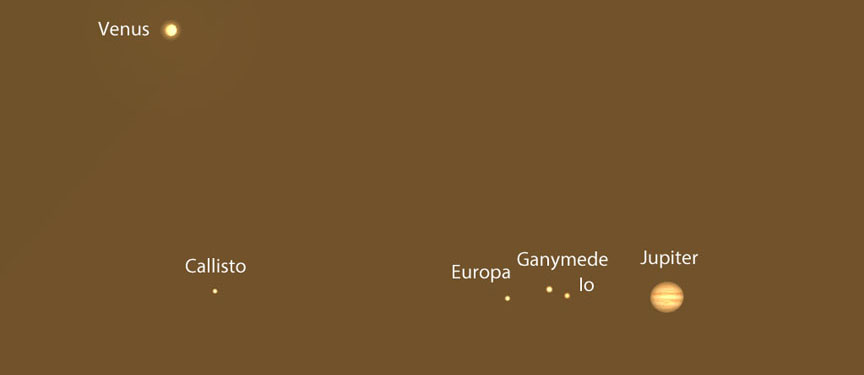
Conjunctions of bright planets make for jewelry in the sky. This week, get ready for some celestial shimmer. If you’ve been following the hither and thither of Mars and Saturn near Antares this summer, you know these planets have been constantly on the move, creating all kinds of cool alignments in the southern sky.
On Tuesday night (August 23) the hopscotching duo will fall in line atop Antares in the southwestern sky at nightfall. Mars will sit just 1.5° above the star and Saturn 4° above Mars. Viewed from the Americas and Europe, the line will appear slightly bent. To catch them perfectly lined up, you’ll have to be in central Asia on the following evening, but the view should be pleasing no matter where you live.
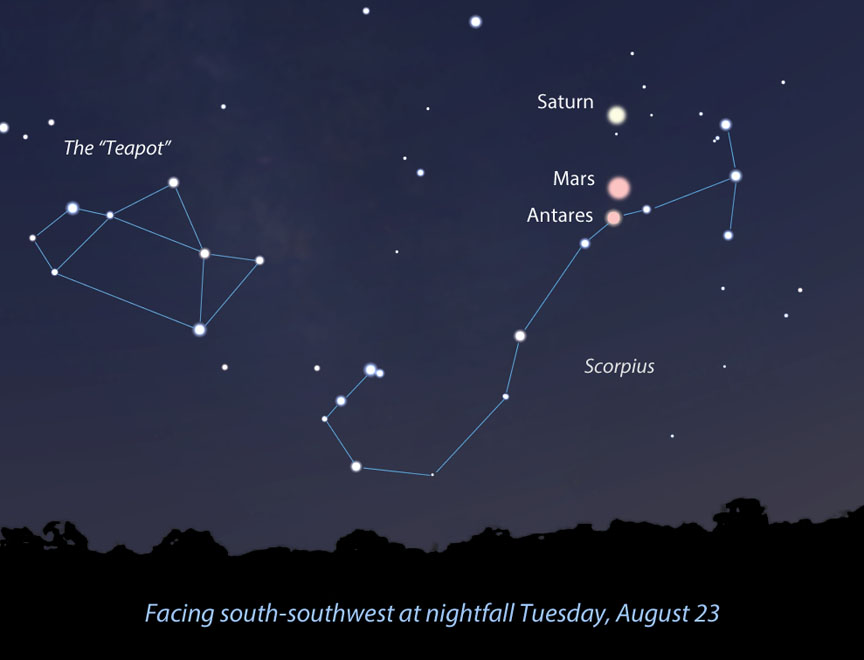
Nice as it is, the Mars-Saturn-Antares lineup is only the warm-up for the big event: the closest conjunction of the two brightest planets this year. On Saturday evening, August 27, Venus and Jupiter will approach within a hair’s breadth of each other as viewed with the naked eye — only 0.1° will separate the two gems. That’s one-fifth of a full moon’s width! While Mars and Saturn will be a snap to spot low in the southwestern sky during their conjunction, Venus and Jupiter snuggle near the western horizon at dusk.
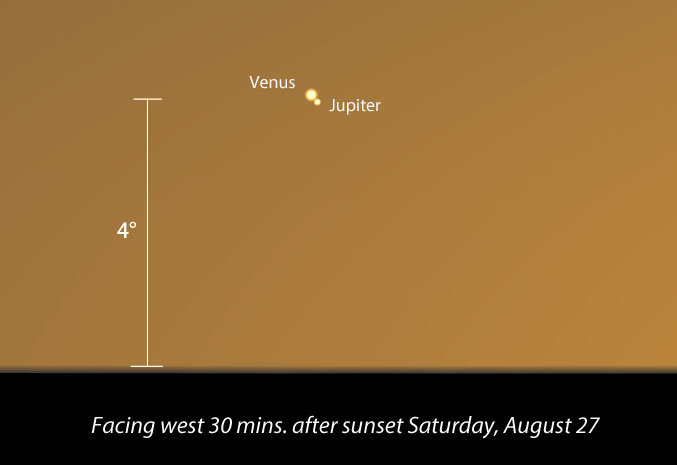
To make sure you see them, find a place in advance of the date with a wide open view to the west. I also suggest bringing a pair of binoculars. It’s so much easier to find an object in bright twilight with help from the glass. You can start looking about 25 minutes after sunset; Venus will catch your eye first. Once you’ve found it, look a smidge to its lower right for Jupiter. If you’re using binoculars, lower them to see how remarkably close the two planets appear using nothing but your eyeballs. Perhaps they’ll remind you of a bright double star in a telescope or even the twin suns of Tatooine in Star Wars.
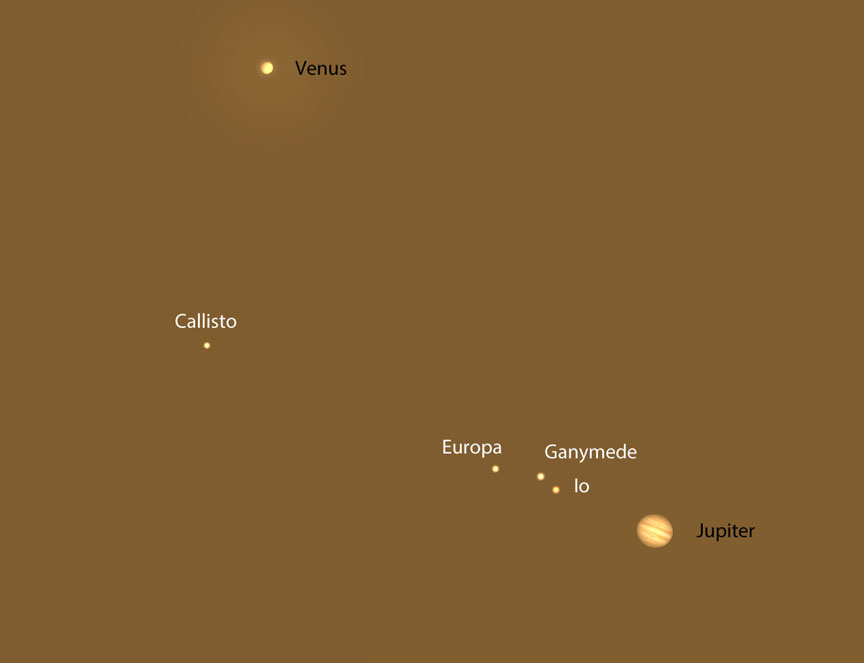
Have a small telescope? Take it along — Jupiter and Venus are so close together that they easily fit in the same high magnification field of view. Jupiter’s four brightest moons will be on display, and Venus will look just like a miniature version of the waxing gibbous moon. Rarely do the sky’s two brightest planets nearly fuse, making this a not-to-miss event.
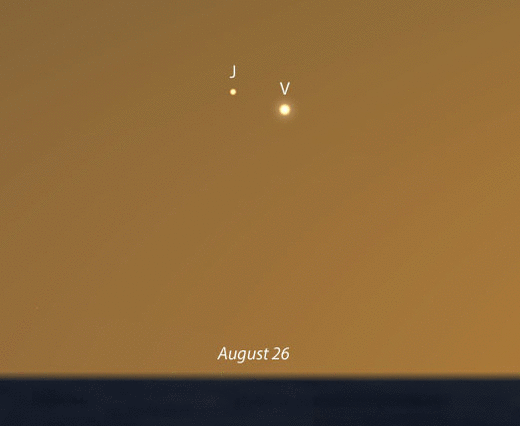
If cloudy weather’s in the forecast that night, you can still spot them relatively close together the night before and night after, when they’ll be about 1° or two full moon diameters apart. I get pretty jazzed when bright objects approach closely in the sky, and I’m betting you do, too.
I also don’t mind being taken in by illusion once in a while. During a conjunction, planets only appear close together because we view them along the same line of sight. Their real distances add a dose of reality.
On Saturday evening Venus will be 143 million miles (230 million km) away vs. 592 million miles (953 million km) for Jupiter. In spite of appearing to almost touch, Jupiter is more than four times farther than the goddess planet.

That distance translates to the chill realm of the giant gaseous planets where sunlight is weak and ice is common. Try stretching your imagination that evening to sense as best you can the vast gulf between the two worlds.
You might also try taking a picture of them with your mobile phone. I suggest this because the sky will be light enough to get a hand-held photo of the scene. Photos or not, don’t miss what the planets have in store for earthlings this week.

